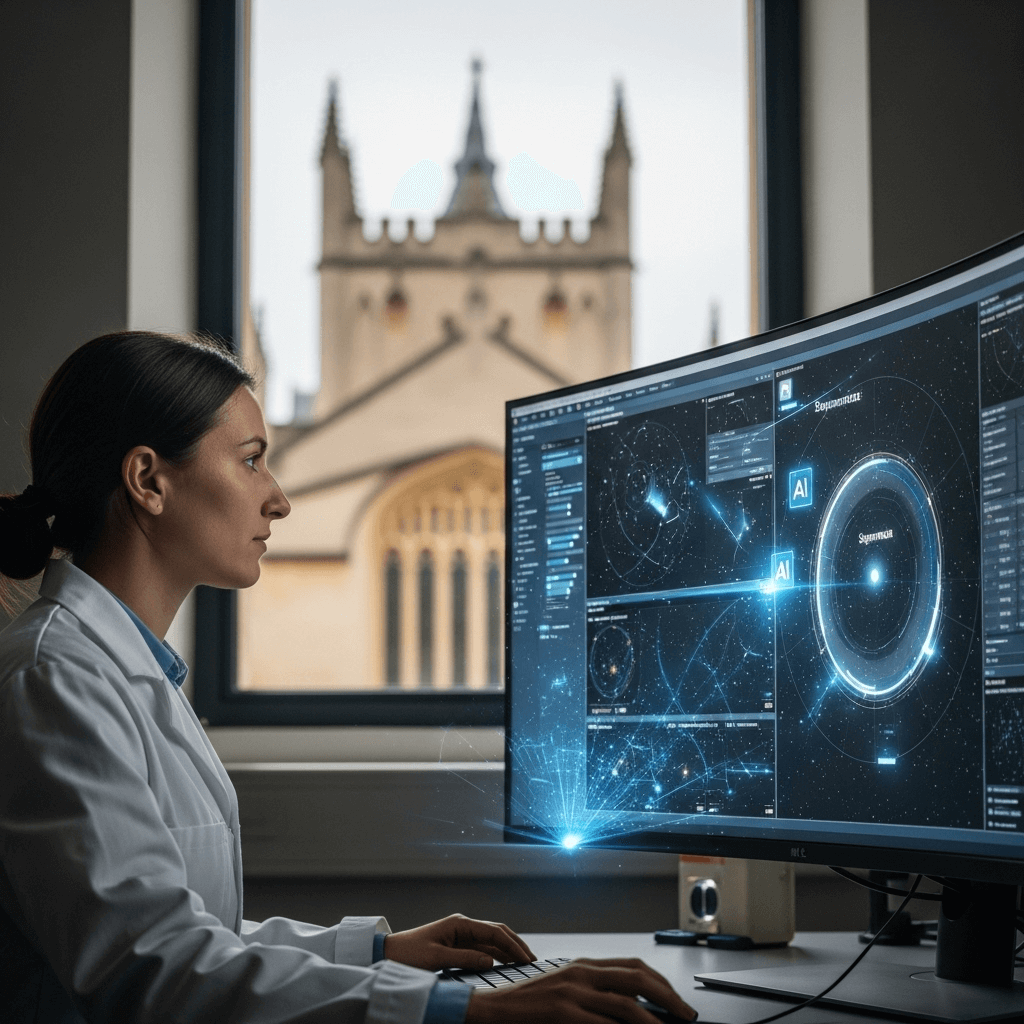Oxford AI Accelerates Supernova Discovery, Revolutionizing Space
Scientists at Oxford University are making incredible strides in understanding the cosmos, specifically in their quest to find supernovae. They have developed a cutting-edge artificial intelligence (AI) tool that significantly accelerates the discovery of these massive stellar explosions. This innovative approach is revolutionizing how astronomers sift through vast amounts of astronomical data, ensuring that crucial cosmic events don’t go unnoticed.
Unveiling Cosmic Explosions: The Challenge of Supernova Discovery
For decades, astronomers have meticulously searched for supernovae – the brilliant, powerful stellar explosions that mark the end of a star’s life. These cosmic fireworks are not just beautiful; they are vital for understanding the universe’s expansion, the creation of heavy elements, and the life cycles of stars. However, detecting these fleeting events in the vastness of space presents a monumental challenge. Imagine finding a needle in an astronomical haystack, where the “haystack” consists of countless galaxies and billions of stars. Observatories constantly gather enormous volumes of image data, far too much for human astronomers to review manually and efficiently. This immense data overload means that many potential supernova candidates could be missed, slowing down scientific progress.
Enter Oxford University’s groundbreaking AI. Recognizing this bottleneck, brilliant minds at Oxford have engineered an AI tool designed to tackle this “cosmic haystack” problem head-on. This artificial intelligence in astronomy acts as a highly efficient cosmic detective, meticulously sifting through terabytes of telescope images. Essentially, it automates the laborious initial screening process that traditionally consumed countless hours of human effort. The AI identifies potential supernova candidates with remarkable speed and accuracy, highlighting only the most promising cases for human experts to then examine in detail. Consequently, this drastically reduces astronomers’ workloads, allowing them to focus their valuable time on deeper analysis and interpretation rather than preliminary data scanning.
AI’s Transformative Role in Astronomical Research and Beyond
The impact of this Oxford University AI tool extends far beyond mere efficiency; it represents a paradigm shift in how we approach astronomical research. By rapidly identifying supernovae, astronomers can observe these events earlier, gathering more comprehensive data about their evolution and characteristics. Earlier detection means scientists can better study the light curves – the change in brightness over time – of these supernovae, which provides critical clues about the type of explosion and the star that created it. This enhanced capability leads to a richer understanding of stellar astrophysics and cosmology. For example, some supernovae, known as Type Ia, serve as “standard candles” for measuring cosmic distances, and finding more of them helps us refine our understanding of the universe’s expansion rate.
Furthermore, this innovative use of artificial intelligence in science sets a precedent for the future of space exploration technology. As telescopes become even more powerful and data streams grow exponentially, AI will become an indispensable partner for human researchers. This AI tool for astronomers proves that artificial intelligence can significantly augment human capabilities, allowing us to unlock secrets of the universe that were previously hidden by the sheer volume of data. It paves the way for a future where advanced algorithms work hand-in-hand with human ingenuity, accelerating discoveries in various scientific fields, from particle physics to climate science, truly transforming our ability to explore and understand the cosmos.
Oxford University’s pioneering use of AI for supernovae discovery marks a pivotal moment in astronomical research. This powerful AI tool effectively transforms the overwhelming task of cosmic data analysis into an efficient process, dramatically reducing astronomers’ workloads and accelerating our understanding of stellar explosions. By leveraging artificial intelligence, we are now better equipped to uncover the universe’s most dramatic events, pushing the boundaries of human knowledge and inspiring future explorations.
For more information, visit: Windows Central – Oxford University Boffins Created an AI Tool to Help Discover the Needles in a Cosmic Haystack, Reducing Its Astronomers’ Workloads Dramatically







